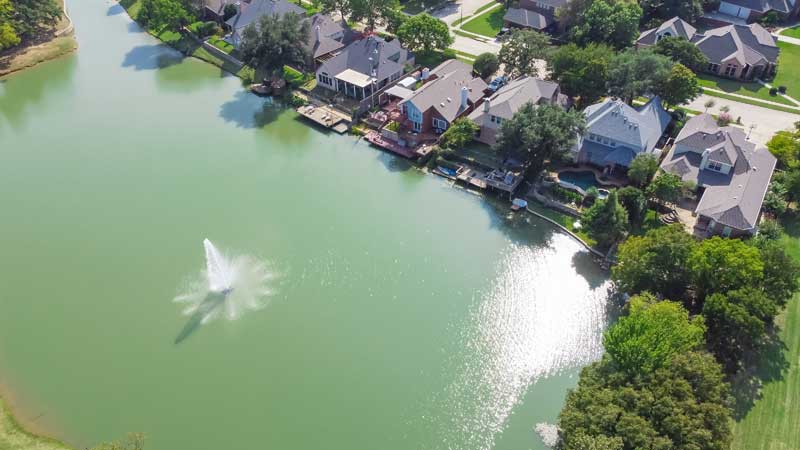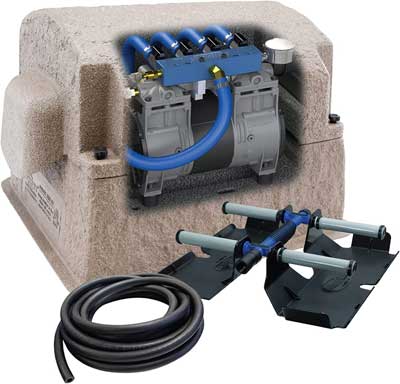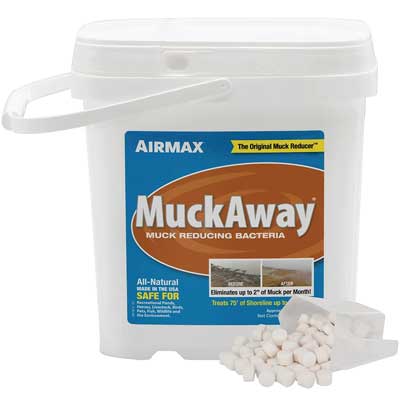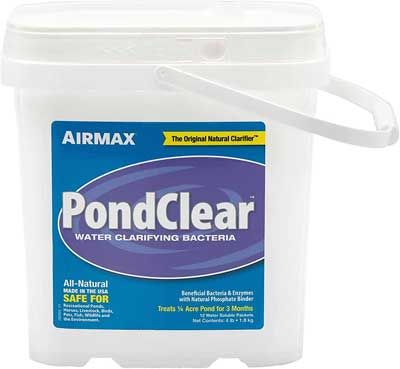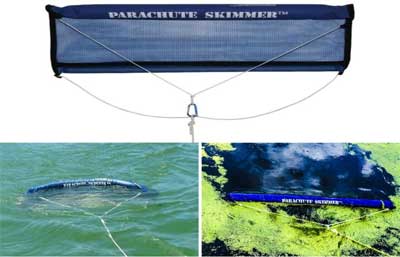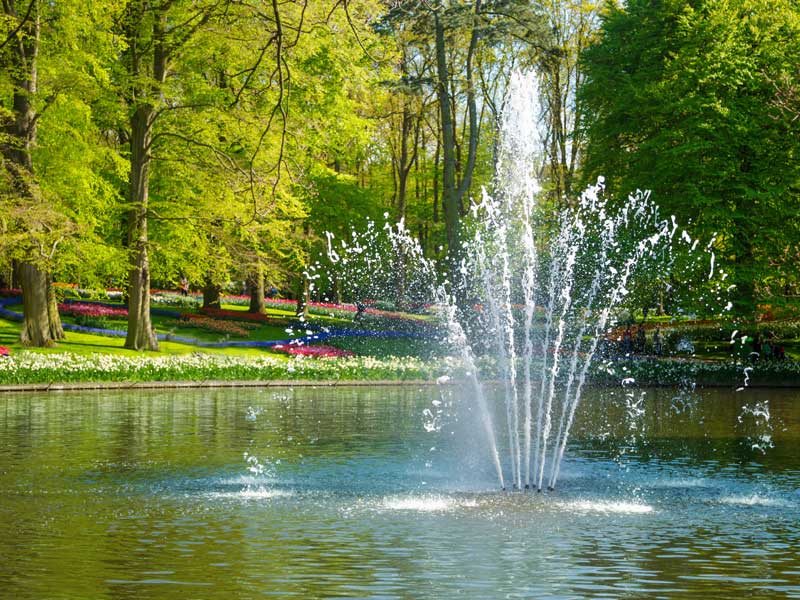
How to Eliminate Muck
You can stay ahead of lake muck. Pond muck, or lake muck can be controlled and even eliminated. There are few things nastier than stepping into a cool, refreshing lake on a hot summer day – only to feel that slimy squishy gooey muck between your toes. In this article we will share with you the best Lake water aerator for the money and other important insights on how to ensure your lake provides the joy and stress relief you had envisioned.
In Summary, Consider These 4 Products For Removal Of Muck
1. Aeration System – These come in sizes for 1 to 4 acre ponds and lakes.
2. Beneficial Bacteria – can remove 2 inches of muck per month
3. PondClear – Cleans water and eliminates odor
4. Parachute Skimmer/Algae Net – Great for cleaning lake surfaces
These are the 4 must have products to clean and keep your lake or pond clean. Let’s now go into more detail about lake muck, what is is there and what you can do about it
What Is Lake Muck?
Muck is made up of decaying plants, waste from fish and reptiles and other organic materials that accumulate at the bottom of your lake or pond. Over time, the sludge can build to be inches or thicker and become a great home for leeches and other unwanted insects and varmints.
What is Muck’s Purpose?
Muck undoubtedly is a food source. “A food source for what?” you may ask. Muck contains high levels of nutrients that feed algae and aquatic weeds. As the muck layer grows, so will your problems with these aquatic nuisances, as you may already be experiencing. Muck can also be a breeding ground for leeches as they love to grow and burrow in the muck.
Why does Muck Smell so Terrible?
Most describe much as having a rotten egg smell. Those odors are common in ponds & small lakes that are not aerated, particularly during certain times of the year. In the summer and winter, non-aerated ponds stratify into layers of water with distinct temperature differences. While the water is stratified, the oxygen in the lower portion of your lake is used up quickly. This causes it to go from an aerobic environment (an oxygen-rich environment) to an anaerobic environment (a low-oxygen environment)
– which is perfect for slow-moving anaerobic bacteria that use enzymes to ferment and digest the decaying muck on the bottom. Those microorganisms ultimately produce waste products, including carbon dioxide and hydrogen sulfide, which is that terrible rotten egg smell.
You have no doubt heard the term “the lake turned over”. During the spring and with harsh weather conditions, the water column turns over; the anaerobic layers on the bottom rise to the top, bringing with it all those foul-smelling odors. Melting ice releasing all those gases at once can help make a big stink!
The good news is that muck accumulation is reversible. You can get rid of muck with a one-two punch of beneficial bacteria and aeration.
Beneficial Bacteria
Billions of beneficial bacteria already live in your lake and work hard to break down lake muck, but if you have large amounts of it they are probably overworked and outnumbered. You can boost their numbers with regular doses of MuckAway™. The special blend of aerobic beneficial bacteria sinks to the bottom where it will digest organic debris (also known as muck) improve water clarity and eliminate noxious odors. MuckAway works well even in areas that experience high water flow, like canals, beaches, and lakefront property.
When applied consistently once every two weeks when water temperatures are above 50ºF and used with a bottom-diffused aeration system, MuckAway has been proven when used correctly to eliminate 1-2 inches of muck per month.
Here’s is how to guarantee Your Lake Muck Removal Efforts are a Success
- Disburse Evenly: When using MuckAway, normally for spot treatments around the shoreline or beach area, the pellets will need to be spread evenly across the treatment area. Plan to use one scoop per 1,000 square feet. When using MuckAway for treatment areas less than two surface acres, evenly broadcast 12 lbs. per acre by boat or raft every 2 weeks. For treatment areas larger than two surface acres, apply treatments every 4 weeks.
- Use a Boat: If you are treating your entire pond or lake, plan on using a boat for uniform MuckAway dispersal. Individual tablets that are spread very far apart (tossed from the shore) will not have as dramatic an impact on muck as those that are densely and evenly distributed.
- Combine Forces: Many customers choose to use a one-two punch when contending with water clarity issues. They will use PondClear™ Beneficial Bacteria water-soluble packets to clean and clear the water column, and MuckAway to break down the sunken muck. Adding aeration to your lake will also help to decrease muck. Oxygen not only helps keep your fish stay healthy, but it also helps the beneficial bacteria in the pond.
The aerobic beneficial bacteria are alive and need oxygen, too.Aeration prevents thermocline, which is when the water column stagnates and forms layers. The upper portion of the body of water that’s exposed to air contains oxygen while the deeper areas lack oxygen – which is where your beneficial bacteria live (or are struggling to survive!). Implementing an Airmax® Aeration System will circulate the contents of your pond and infuse the entire water column with oxygen.
If you ask most people who have a lakes on their property they will tell you that their invest in the Airmax Aeration System was one of the best investments they ever made. This equipment is the best in the market for lake muck and getting lake muck off the bottom of your lake.
This influx in oxygen helps beneficial bacteria flourish and feed on all that accumulated organic debris.Manual Removal Although not the easiest or most fun job, you can remov
-
e some of the lake muck with a Pond & Beach Rake and a bucket or wheelbarrow. You can increase the effectiveness of MuckAway and by raking out any large, long-to-decompose debris from the pond before you begin treatments. This allows those aerobic beneficial bacteria to target the fine debris that’s normally hard to deal with.
Natural Pond & Lake Muck Removal
As ponds age, they accumulate years of organic material from runoff containing grass clippings, leaves, branches, dead and decaying aquatic weeds and algae, fertilizers, leaking septic waste, animal waste, and the list goes on and on. Lake Muck is all about oxygen and that is why lake aeration is so important. As these materials begin to decay they utilize the oxygen available in the water. As the organic material builds, more oxygen is used. The presence of muck or a rotten egg smell are sure signs that the bottom is lacking in oxygen and the lake bottom could benefit from reduced muck. Muck reduction is the foremost and necessary step towards a clean lake bottom or pond bottom.
When oxygen is depleted in a water body, anaerobic bacteria partially break down the sediment. In the process, they expel hydrogen sulfide. Hydrogen sulfide is the rotten egg smell present when you stir up the muck in most lakes or ponds. The cause of the odor is a lack of oxygen. Hydrogen sulfide is not only highly toxic to aerobic bacteria; hydrogen sulfide is also toxic to insects and is toxic to fish at levels of 0.3 mg/l (a very low amount).
The anaerobic bacteria also release ammonia into the water column. Ammonia feeds weeds and algae and is toxic to fish at levels greater than 3.0 mg/l. Also released are methane, nitrogen gas and carbon dioxide. These also are toxic to aerobic bacteria, insects, and fish. Carbon dioxide and methane kill fish at levels greater than 30 mg/l. Ultimately, the causes of organic sediment (muck) accumulation, unpleasant odor and fish kills in lakes are a lack of oxygen and high levels of toxic gases.

While bottom oxygen tests may show that the bottom is oxygenated, these tests are usually made during the day, when aquatic plants are putting oxygen into the water.
However, bottom oxygen tests in the middle of the night may show no oxygen because plants take up oxygen during the night. Lack of oxygen also depends on the time of year. Just a few hours without oxygen is enough to kill the beneficial bacteria and insects that feed on organic muck. These bacteria play a major part in muck removal.
Process of Natural Muck Removal
If oxygen is present throughout the water column at all times this is the best way to keep your lake clear and free of muck. Beneficial aerobic microorganisms and insects feed on the organic sediment which will ultimately result in a cleaner lake bottom.
Keeping your lake bottom free of muck is simple as long as you don’t neglect aeration. It is similar to bacteria and insects feeding on compost. The bacteria feed on the organic sediment, and the insects feed on either the bacteria or the muck, or both. Bacteria are high protein food for insects. The bacteria convert organic sediment into carbon dioxide and water and a microscopic amount of inorganic “ash”. In this process, the bacteria exude an enzyme to soften the tough walls of the cellulose cells. You can accelerates this process for the sake of muck removal by adding our natural vegetable enzyme.
In addition, the right oxygenation system will provide oxygen throughout the pond to maintain aerobic decay. Once oxygen is available, our microorganisms and enzymes have proven to be very effective in reducing the build-up of muck that results from anaerobic decay in aging ponds.
Summary For Lake Muck Removal
Muck is unsightly, smells and does not feel good underfoot. However, you can fix this problem or at least greatly reduce it with the above steps and products. Enjoy a clean lake or pond that is much free. Good Luck!
Check out our review on the best solar lights for your lake house.

